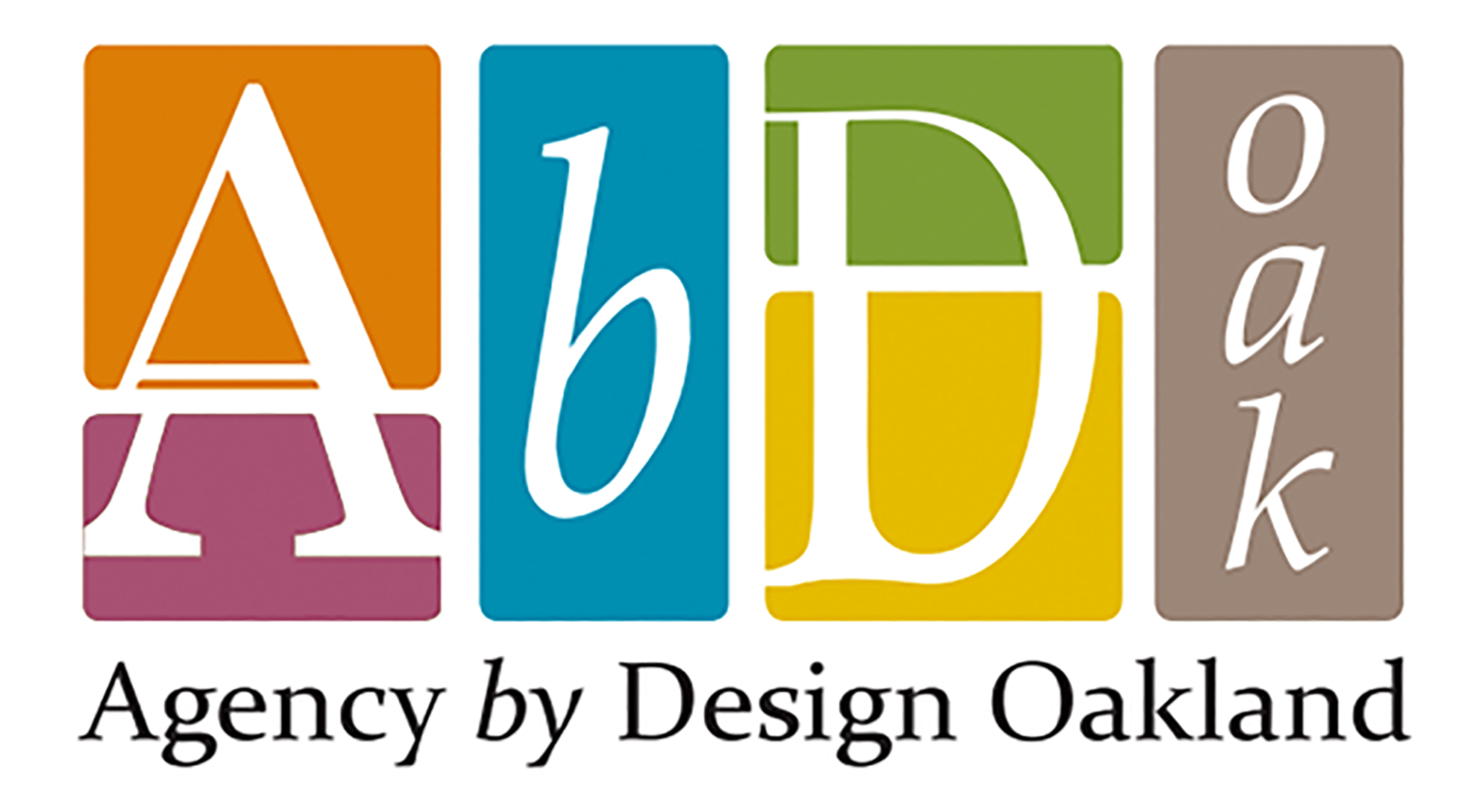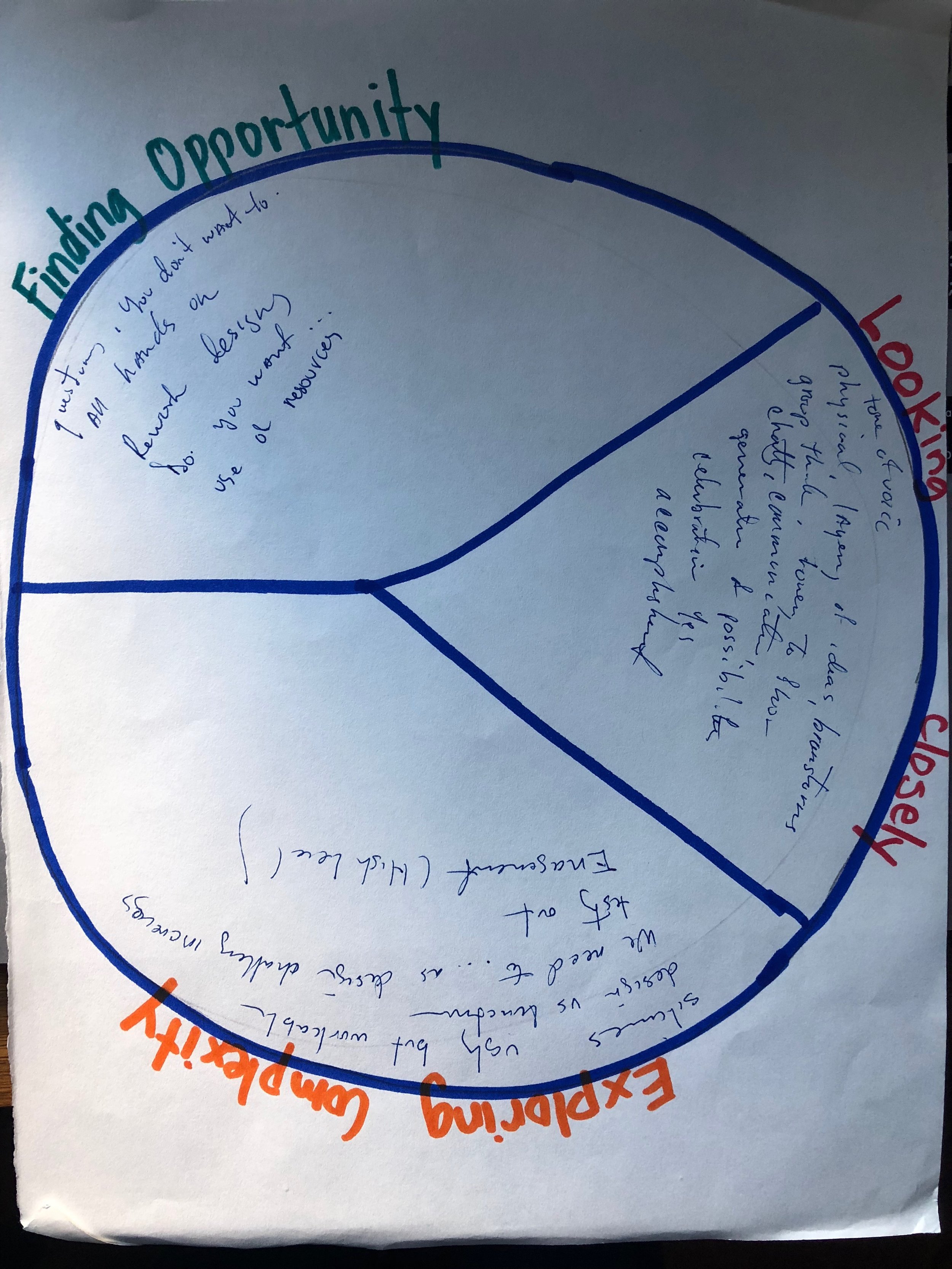[Editor’s Note]: The following blog post by Program Coordinator Nico Chen describes a daylong professional development facilitated by Brooke Toczylowski and Paula Mitchell. Agency by Design Oakland partners with various schools and districts to offer customizable workshops and coaching. Workshops range in length from short meetings to multi-day intensives. Agency by Design Oakland team members also work with individuals and groups through one-on-one and small group coaching and consultations.
If you or your school site are interested in Agency by Design Oakland workshops or coaching, please email Brooke Toczylowski at brooke.toczylowski@ousd.org.
“The hands-on, collaborative activities were a fun way to explore ideas with colleagues. The facilitators were all knowledgeable, professional and pleasant. They offered a lot of great resources as well.””
Agency by Design Oakland spent a day with the educators from Civicorps, a continuation high school in West Oakland for students ages 18-26. Our day of professional development focused on Maker Empowerment and Systems Thinking. Below are some “Aha!” moments from our day of hands-on and minds-on maker-centered learning activities.
9:30 a.m. - Design Challenge!
The day kicked on with a hands-on activity: a design challenge! We asked our Civicorps educators to split up into teams of 3 and build a chair that holds their own weight using only brads and cardboard. Above are pictures of their resulting creations.
10:00 a.m. - Observations Using the Agency by Design Framework
While we had most of our Civicorps educators participate in our design challenge, we also asked three Civicorps educators to participate as observers. They were given the Agency by Design framework to observe for signs of learning: looking closely, exploring complexity, and finding opportunities to reframe, rethink, and innovate.
After our two groups finished their design challenge, our three educator-observers shared out their findings. Health & Wellness Teacher Katrina Lashea noticed how teachers were looking closely through “a lot of communication and generating lots of possibilities.” “I noticed everybody paid attention to each other both physically and idealistically,” said College Counselor Deneah Murphy. “The teachers were exploring complexity because everybody had their own idea about what the chair would look like but they found ways to incorporate everybody’s ideas into making their chairs.” English Teacher Joseph Bradshaw noticed that both groups “seemed very focused” and were finding opportunity when they “testing out the different pieces of cardboard” and “took advantage of the creases in the cardboard pieces that they found.” “Towards the end, there was a lot of celebration,” said Lashea.
10:30 a.m. - Looking Closely/Take Apart
We asked our Civicorps educators to get into new groups and to choose an object to take apart — one group chose an old office phone, while the other group chose a small speaker. Using the Parts, Purposes, Complexities thinking routine, our groups looked at their taken-apart object closely and documented their thinking on paper.
After consolidating their thinking on paper, each group presented what they learned through the take apart activity. Research Teacher Katy Avila said, “While this phone is outdated in certain respects, our iPhones do not have the office applications that this phone has — like background music while you’re put on hold or conference-call type functions that are specific to an office phone.”
“Could anybody in the room get into the complex metallurgy of carbon steel or the mixture of various elements and materials to create this rubberized plastic?“ inquired Science Teacher and Tech Lead Aakash Desai about the parts of his group’s taken-apart speaker. “You can teach a whole class just based on a deep dive into each component.”
1:30 p.m. - Exploring Complexity/Systems Thinking
After lunch, we regathered our Civicorps educators and did some thinking around systems. We asked the question “Is it a system?” while looking at a series of pictures. The answer was invariably “YES!”
We then asked our Civicorps educators to get into groups and to choose a system to analyze through the Parts, People, Interactions thinking routine. Using the materials available, each group sketched out a visual representation of their system. After completing this minds-on activity, we asked our Civicorps educators to push their thinking with the Imagine If… thinking routine and to document their thinking on paper.
We pushed our Civicorps educators’ thinking even further by asking them to synthesize and distill their systems thinking into a headline. One group that dove deeply into the system of surveillance using a picture of surveillance camera came up with this headline: “Parenting in a Capitalist Society: It’s a Set Up for Failure!” Another group who dove deeply into the system of symbols using a picture of a flower in a grenade came up with the headline: “How Symbols Control Our World.”
3:30 p.m. - Finding Opportunity/Bridging Into Practice
After a full day with our Civicorps educators’ active participation as learners, we asked them to reflect and find opportunities to incorporate these Agency by Design ideas into their own practice and context. “I was thinking about how I could start each class with a looking closely routine,” said Math Teacher Michelle Cascio. “I could provide a visual example and have a discussion with my students about what they see, and then ask them what we are going to learn today.”
“Lately I’ve been doing this college research project,” said College Counselor Deneah Wilson, “but instead of making them do all this research, I could have them look at systems of colleges and make them create their own colleges…seeing what they want out of this particular institution and using this to help them decide what colleges they want to go to.”
“I’d like to try the [Parts, Purposes, Complexities thinking routine] when it comes to breaking down a poem collaboratively,” said English Teacher Joseph Bradshaw. “In my class, people are usually having a discussion or people are writing, so I would like to do something different.”
“This training was very helpful, especially in regards to learning new and more effective ways to keep students active and engaged during class.””




















